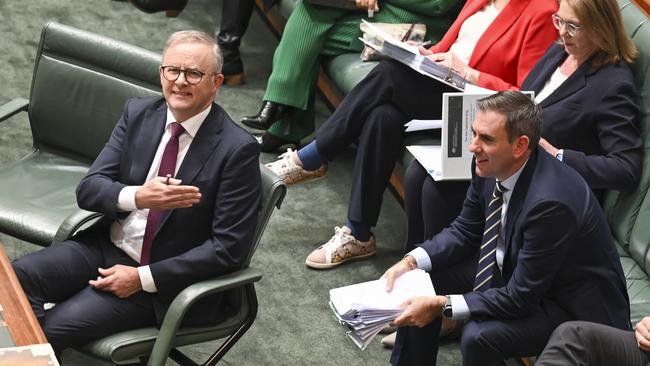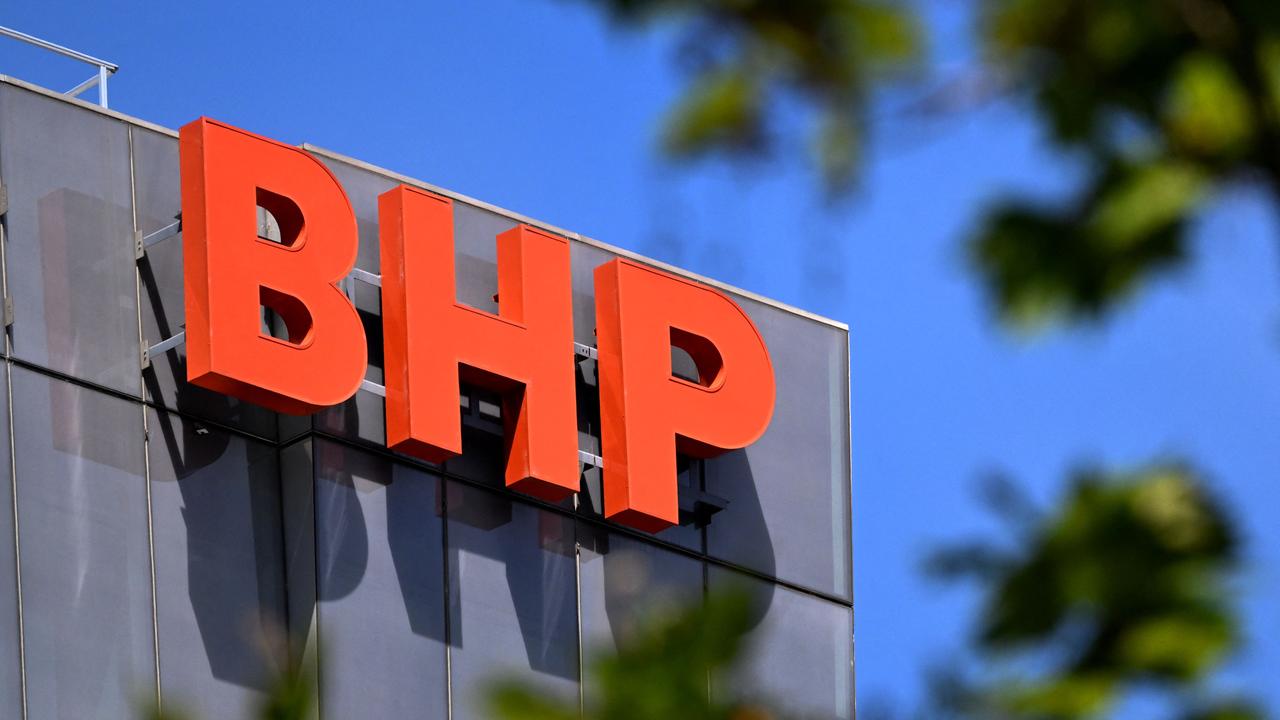
Add to that, after July 1 there will be a sugar hit of consumer spending as a result of superannuation withdrawals by baby boomers, wage rises, power rebates and other government spending.
But as I move around the business community, I get a sense of foreboding about the world that will follow the “sugar hit”.
And it’s not just because of mortgage and rent stress and the anti-Semitism based on racist behaviour that poor managers have allowed to infiltrate our top universities. The forces behind that foreboding include those that are boosting inflation. The market this week started to understand what is happening behind the scenes.
The business community in 2019 welcomed the Albanese/Chalmers government and hoped that they would be like the Hawke/Keating combination, which brought unions and business together to achieve wage rises offset by productivity improvements.
Sadly, the Albanese/Chalmers government is totally different to Hawke/Keating.
Business was misled and enterprises, small and large, have been totally sidelined as unions have been given legislated powers that will lower productivity and increase costs.

The owner of Australia’s biggest building supply group Dahlsens, as well as former Woolworths chair and ANZ Bank long-serving board director, John Dahlsen has a unique business contact network that provides insights from the business coal face that few others can match.
Some of Dahlsen’s latest insights are scary and contrast with the share market outlook:
•The government increased wages without demanding productivity improvements in return, thereby missing a chance to remove burdensome regulations and impractical employment conditions.
For example, a deal with BHP in South Australia could have led to the development of a world-class copper mine, yielding substantial national benefits. Instead, excessive regulations and compliance demands are stifling potential economic gains.
•Sector wide industry bargaining, “resurrected from the dark ages”, fails to recognise that each company is in a unique position. Company specific agreements, which allow for more effective exchanges of wage increases and benefits for productivity improvements, are far more beneficial than standardised sector agreements.
Sector bargaining imposes uniform costs, driving inefficiencies and necessitating more arbitration, while reducing the prevalence of flexible casual, independent contractor, and gig work.
•Unions will appoint delegates to businesses even when only a handful of employees desire such representation which revitalises their power and amplifies their influence on all enterprises, regardless of size.
This blow comes at a time when business owners are struggling with rising costs in wages, freight, energy, rent, insurance, compliance, and difficulties in borrowing.
•Reflecting what is happening across a multitude of enterprises, most ASX companies are reporting falling profits and lower returns because of the rising cost of labour.
For two quarters, per capita growth has been negative. Australia’s growth of 1.75 per cent this year, two per cent next year, is way below the long-term average of 3.5 per cent.
•More is being spent on government capital works than private sector capital works. The mix of workers to non-workers is shrinking.
•Governments will not accept that their direct and indirect taxes cause 50 per cent plus of the cost of house and land.
•Banks are lending less to business than on residential mortgages, yet housing starts are seriously in trouble.
•Coal, iron ore, gas, rare minerals, and agriculture are the cornerstone of Australia’s competitive advantage, but are suffering from overregulation. Between 2013 and 2023, only 20 per cent of mining projects reached maturity, largely due to governmental knuckling under pressure from environmentalist groups.
This reluctance to proceed with nationally significant projects, curtails export income, job creation, and overall living standards.
•We now face soaring construction costs, making Australia one of the most expensive countries for building, measured by labour costs per hour. CFMEU wage costs are 75 per cent higher than the industry average, pricing companies out of contracts.
This has a substantial inflationary effect on the economy and places many activities, such as home building, out of reach.
Large government infrastructure projects, controlled by the CFMEU, have absorbed vast amounts of labour, and building materials, leading to supply shortages. Infrastructure wages are exorbitant ($206,000 for an entry level worker), unmatchable by the private sector. Building costs have surged by 40 per cent since 2019, partly because government contracts are awarded solely to unionised sites, further driving inflation, and hindering solutions to our housing crisis.

•The international grocery sector finds Australia one of the most expensive countries to navigate, contributing to soaring supermarket prices.
•Manufacturing as a share of GDP in the early 2000s was 10.11 per cent and in 2022 it has declined to 6 per cent. Current government policy will reduce this further.
•Our tax structure places Australia at a significant competitive disadvantage. Personal tax per capita is among the highest in the world, and the high share of taxable income dramatically disincentives economic activity.
The proportion of taxpayers paying the highest tax rate of 45 per cent will rise from 4.4 per cent to 7.4 per cent in 2024-25.
•More and more public servants are being appointed, causing the ratio of producers/lifters to takers to decline. For instance, between 2018 and 2023 public service employees have grown by 22 per cent and wages by 35.5 per cent.
•Australia is becoming increasingly less attractive for investment due to its rising cost structures, energy prices, wages, freight, regulation, and business compliance complexities. Our competitive position has declined from fourth in 2004 to nineteenth in 2023.







Until this week, on the surface, everything in the Australian garden looked rosy. The sharemarket was close to peak levels, the Australian dollar was being well supported, inflation looked like it was coming down partly via subsidies, and the markets were expecting interest rate falls.